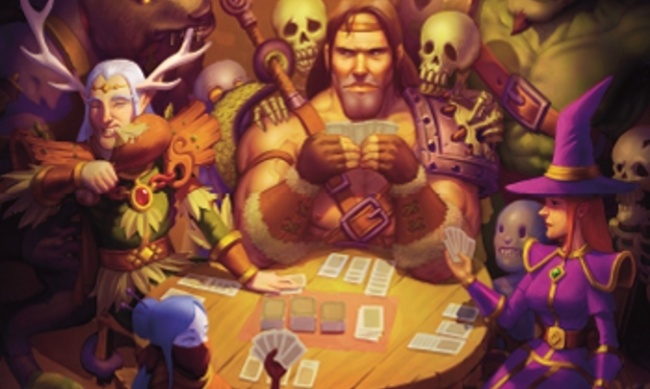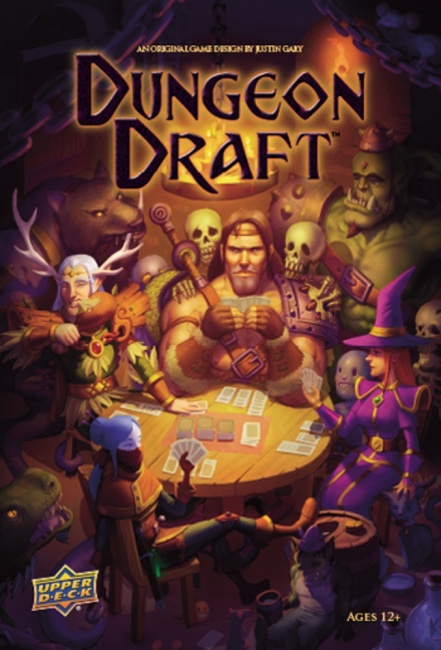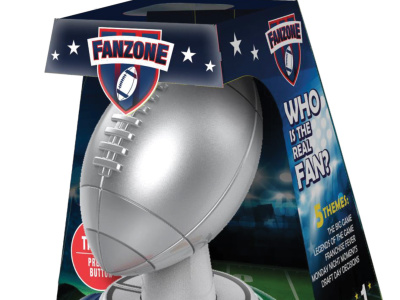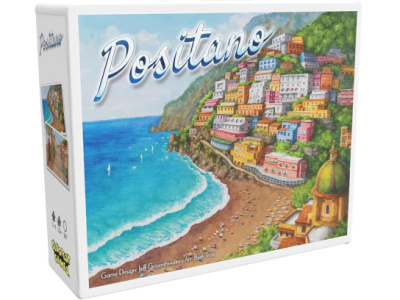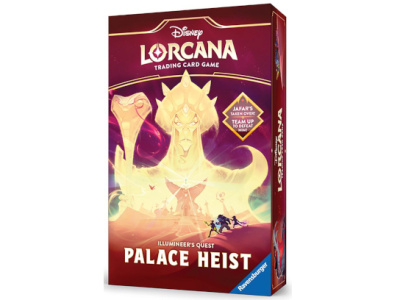Publisher: Upper Deck
Designer: Justin Gary
Illustrations: Various
Release Date: December, 2017
MSRP: $24.99
Number of Players: 2 to 5
Playing Time: 30 to 45 minutes
Age Rating: 14 and up
Product #: WGO53117
ICv2 Rating: 3 Stars out of 5
The genre of “card drafting games” continues to evolve, with designers both well-known and obscure exploring the many ways that this seemingly simple mechanic can be integrated into every conceivable style and theme. Accomplished designer Justin Gary (Ascension) has tossed his hat into this increasingly crowded arena in the form of Dungeon Draft.
Summary: Imagine, if you will, the traditional start of any fantasy adventure: in the local tavern, would-be heroes and other ne’er-do-wells rub shoulders as they listen to gossip and seek like-minded miscreants to form adventuring parties in search of gold and fame—and the all-important “experience.” Translate that scenario into a card game, and you’ve got the idea behind Dungeon Draft.
In each of four rounds, the players are given a hand of seven cards representing heroes, weapons, and monsters to fight. In the now-familiar pattern, each player chooses one card to keep and passes the rest to their neighbor. From the six cards passed to them, each player then picks one more, passing along the other five. This continues until all the cards have been chosen. Finally, in turn, each player plays their cards as best they can. Heroes and weapons must be purchased with the gold coins each player has been given, while monsters can only be defeated by using the attack strength of those heroes and weapons that the player can manage to pay for. Nearly every card gives a one-time ability when played, but continues to provide gold income or attack strength for the rest of the game. Many cards also award “experience points”—the victory points for the game. Meanwhile, to help guide their strategy, each player has three secret goals that, if completed, can award big bonuses or powerful special abilities.
Originality: Card drafting has been around long enough that it no longer qualifies as “new” in and of itself. And there is little inside this box that is not going to feel familiar to anyone who is already familiar with the genre. Nonetheless, Gary has done a fine job of combining the mechanic and the theme, and the result is a very nice light “filler” type game that plays quickly while still offering some good tactical decision-making and a surprising level of strategic planning, something that a lot of card drafting games struggle with.
Presentation: The artwork has a rather comic book-style feel to it, which I think works nicely for a game of this complexity level, and despite using a stable of nine different artists the presentation is pretty consistent in quality and style throughout. The box is nice and sturdy, and has a good weight for its size, but I find the graphic presentation a bit dark, causing the title to fade into the background. The box back could do a better job of communicating what the game is about, but at least it has some nice images of the cards in the game.
Quality: Upper Deck has clearly used its expertise in card technology here, as the cards are very good: sturdy and flexible. Each card has nice artwork covering most of the card, with the important information presented clearly around the borders of the art. The tokens are also good: sturdy and cleanly die-cut, and in plentiful quantities. The cardboard insert is functional, but not particularly attractive, and keeps the components in place during shipping. The rulebook is full color, but not glossy, and the rules text is nicely supported by illustrations and examples. Sadly, though, they do not appear to be complete. Despite multiple read-throughs, I find I am still left with questions and forced to seek out answers online or come to my own conclusions (what exactly does “Activate” mean, anyway? And is it really true that weapons don’t need a hero to wield them?).
Marketability: Card drafting games continue to be popular, and Gary has a proven track record with his design efforts. Dungeon Draft is a solid addition to his resume, and the short playing time makes it attractive to players looking for a light, casual game. The artwork is good, gameplay is easy to learn, and it plays quickly. The price point is pretty reasonable for a box with 200 cards (plus 80 tokens), but high enough that it might give some potential buyers pause.
Overall: Dungeon Draft has a few interesting quirks, and I can recognize the hand of the designer in style, theme, and choice of mechanics. That’s a plus for fans of Gary’s work. But the design is distinctive enough from his other games that it shouldn’t be a detriment for those who have not found his style to their liking. The game is quick and easy, and a lot of fun, but I didn’t really feel like I was interacting enough with the other players to make it a truly engaging social activity—which is what I mostly look for in my filler games. On the plus side, the game does offer a lot more depth of decision-making than I expected, and the fact that you will only use about half the cards in each game promises a lot of variability and replay value.
The title of the game is rather plain, and perhaps a bit uninspiring. It didn’t generate much enthusiasm from my group when I suggested it. But once everybody started playing, they did enjoy themselves. And in the end, that’s what games are supposed to be about. This isn’t a stand-out, but it is a well-designed and very playable drafting game. That’s why I’m giving it 3 out of 5.



